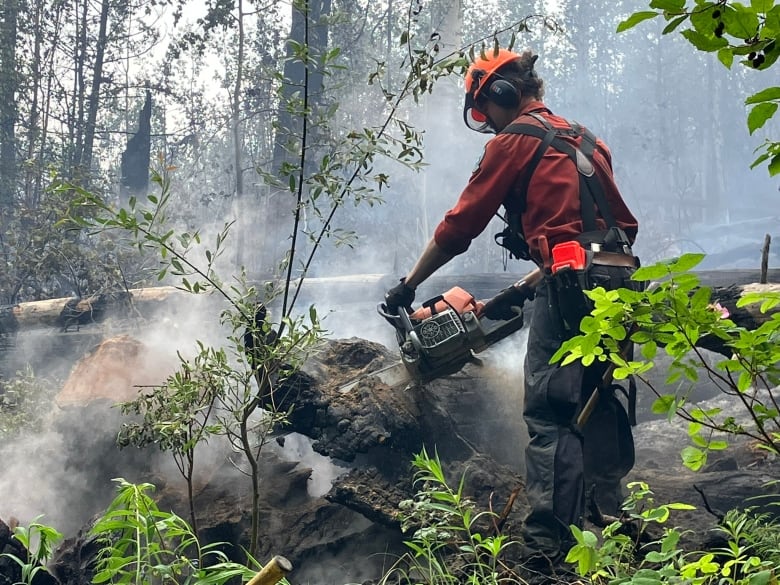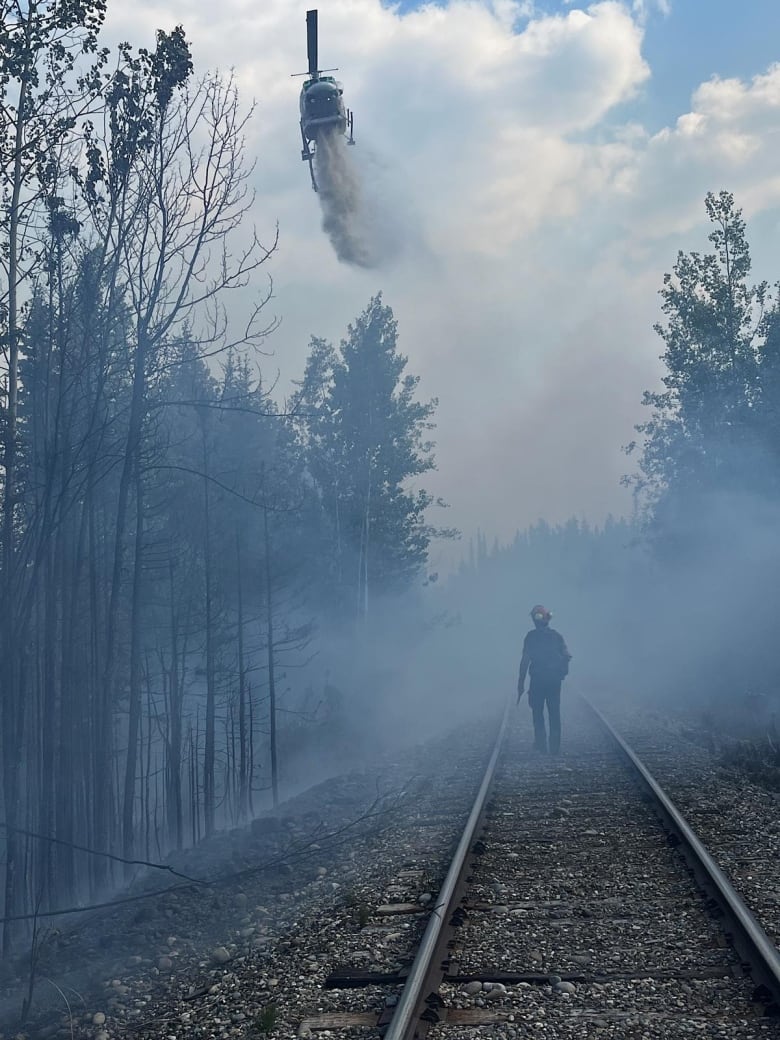
B.C.’s largest wildfire on record now eclipses the entire area of Prince Edward Island, and experts say after it’s done burning, there could be a commercial rush for burnt timber that could further change the landscape for the worse.
The Donnie Creek wildfire is burning over 5,715 square kilometres as of July 2, according to the B.C. Wildfire Service.
Mike Flannigan, professor of wildland fire at Thompson Rivers University, said the amount of land burned so far is astronomical.
The Donnie Creek wildfire has charred enough land to count as the fifth-worst fire season of all time in the province all on its own, according to the professor.
“It will continue to burn for weeks and probably until the end of the fire season. It may actually burn through winter, smouldering in deeper organic layers, and then pop up,” he told CBC News.
“It’s an enormous chunk and you can see it from space, how large this area is.”

The giant blaze, which started well before traditional wildfire season usually begins in B.C., is leading to concerns for the unique trees that make up the boreal forest in the province’s northeast, as well as the animals whose habitats might be irrevocably changed.
Flannigan said the historic wildfire season would not have been possible if not for human-caused climate change, as a warmer world causes more lightning strikes — which lead to around half of all fires, and ones that burn for longer.
“The warmer it gets, the more efficient the atmosphere is at sucking the moisture of the fuels … on the forest floor,” he said.
“Unless we see more rain to compensate for this drying effect … it’s easier for a fire to start, easier for a fire to spread, and it means more fuel is available to burn.”
Flannigan said that, for fires as large as Donnie Creek, it’s best to let it burn out and let “Mother Nature do her thing.”
Concern for carbon stores, animals
Kevin Smith, manager of the boreal program at environmental non-profit Ducks Unlimited, said forests have historically evolved alongside wildfires — but gigantic fires like Donnie Creek are changing the environment around them.
“Those shifts in patterns are not only increasing the amount of carbon emitted but also changing the vegetation that’s coming back,” he said. “Because the organic part of the soils in these catastrophic higher intensity fires, they’re burning off.
“What comes back after that is very different from what was previously there.”
Smith said the trees charred by the Donnie Creek blaze — black spruce, aspen, pine and tamarack — could be replaced by other vegetation over the coming decades.
“The concern is that the boreal forest in many areas with a much drier and warmer climate could start to shift toward more of a grassland savannah,” he said.
Jesse Zeman, executive director of the B.C. Wildlife Federation, said the area where the Donnie Creek fire is burning is home to smaller fur-bearing animals — like martens and ermine — as well as larger animals like moose.

He said smaller animals may not have been able to escape the fire, but there may be a silver lining to the blaze once it is finally extinguished.
“As long as we manage the landscape properly after the fire, we’re hopeful that we will see a response in moose populations in that area,” he said.
However, Zeman said he’s concerned about “salvage logging” — when industries move in to seek burnt timber after a wildfire is extinguished, likening it to a “gold rush” mentality.
Zeman said the “outdated” practice is due to economic considerations.
Burned wood can be used for fuel as well as in the production of pulp and paper. But research has found that wood decay after a wildfire reduces timber quality, so companies seek to recover as much freshly burned wood as possible before the multi-year decay process begins.
“Salvage logging tends to bring a lot of roads and trails. It brings a lot of weeds,” he said. “You don’t see regeneration of the forest nearly as quickly as you would by leaving those trees standing or leaving kind of a more diverse landscape.”
Smith said policymakers should consider valuing areas that store high amounts of carbon, like the boreal forests, at the same level as they do life and property when they look at wildfire and forest management policies in the years to come.
Check the CBC News Climate Dashboard for live updates on wildfire smoke and active fires across the country. Set your location for information on air quality and to find out how today’s temperatures compare to historical trends.












